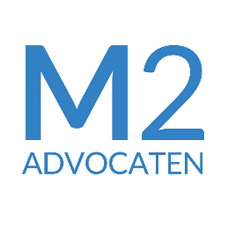It regularly happens that a landlord passes on the Owners Association (OA, in Dutch “VvE”) contribution to his tenant as part of the service costs, but is this actually allowed? For example, in a recent judgment of the Amsterdam Subdistrict Court it was ruled that a landlord had wrongly charged the VVE contribution of 200 euros per month to its tenant as service costs. As a result, the landlord had to repay no less than €5500 in undue VVE contributions to the tenant. However, this does not mean that a VVE contribution can never be passed on to a tenant. When can the VVE contribution be passed on to the tenant and when can it not be?
Not charging VVE costs one-to-one
In the case as described above, the landlord had included in the lease that the tenant was due a monthly fee in respect of the ‘service costs VVE. However, the court ruled that VVE costs cannot be passed on to a tenant on a one-to-one basis. VVE costs may only be passed on to a tenant to the extent that they are directly related to the use of the property.
A landlord is therefore better advised to specify these VVE costs in more detail in order to make it clear that they are indeed user costs. It does not suffice to simply include a cost item ‘service costs VVE, since service costs for the VVE will normally not consist entirely of user costs. Incidentally, it should be noted that in this court case, the lessor could not subsequently prove that these were operating costs.
In some cases, it will not be immediately clear to the landlord what specific amounts the monthly remittance to the VVE consists of. In that case, a more detailed cost specification will have to be requested from the VVE in order to find out which parts of it can be passed on to the tenant. The tenant is therefore also entitled to such a cost specification.
Which costs within the VVE contribution can a lessor pass on?
Examples of costs that can be passed on to the tenant are:
– Heating costs
– Glass cleaning of windows that the occupant cannot reach without risk.
– Electricity consumption of communal areas
– Cleaning costs of common areas
– Sweeping of chimneys and drains
What costs within the VVE contribution can a landlord not charge to his tenants?
Examples of costs that cannot be passed on to the tenant are:
– Required maintenance costs for the complex (e.g. maintenance of the lift and/or existing lighting installations).
– Repairs to the building
How do you charge these costs to the tenant?
If a landlord wishes to pass on certain VVE costs to the tenant, these costs must first be specified and agreed in the tenancy agreement. Subsequently, the landlord is legally obliged to provide the tenant annually with a specified(!) overview of these service costs (article 7:259 paragraph 2). The tenant may require the lessor to substantiate the costs with statements of account. The lessor is not permitted to make a profit on recharged costs. Therefore, a lessor may not charge more for user costs than it has actually incurred.
The annual service costs overview must be provided within six months after the end of the calendar year at the latest. In short, before July 1st, the lessor must have provided the lessee with an overview of the costs for the previous calendar year. In addition, the provision of a service charge overview is necessary if a lessor wishes to increase the advance payment amount (Article 7:261).
In short, if user costs are included in your VVE payment, these costs may be passed on to your tenant provided this has been agreed in the lease agreement. Subsequently, provide a clear and specified service costs overview on time and annually. If the tenant does not agree with the service costs, the rent commission and otherwise the subdistrict court may be requested to rule on the service costs.
Ginio Beij
Do you have further questions about charging service costs or other questions?
Please feel free to contact M2 Advocaten.

